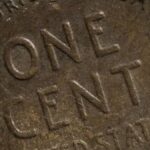The Lincoln Wheat Penny, a classic piece of American coinage, has captured the attention of collectors and enthusiasts worldwide. While millions of these coins were minted between 1909 and 1958, a select few have become incredibly valuable, with one recently valued at an astonishing $610,000. Here’s everything you need to know about this extraordinary coin and its journey from everyday change to a collector’s dream.
History of the Lincoln Wheat Penny
The Lincoln Wheat Penny, also known as the “Wheat Cent,” was first introduced in 1909 to commemorate the 100th anniversary of President Abraham Lincoln’s birth. Designed by Victor David Brenner, the coin features Lincoln’s profile on the obverse and two wheat stalks framing the denomination and the words “ONE CENT” on the reverse.
This penny was revolutionary, as it was the first U.S. coin to feature a real historical figure instead of allegorical imagery. Its production spanned nearly five decades, making it a staple of American pocket change.
What Makes Certain Wheat Pennies So Valuable?
While most Lincoln Wheat Pennies are worth only a few cents to a few dollars, certain variations and errors make specific coins exceptionally rare and valuable. The following factors contribute to the high value of certain pennies:
- Minting Errors: Coins with mistakes during the minting process, such as double-die strikes or off-center images, are highly sought after by collectors.
- Low Mintage Numbers: Certain years and mint marks had limited production, making those coins rarer.
- Unique Features: Specific design quirks or transitional issues, such as coins struck on the wrong planchet, add to their rarity.
- Condition: Coins in pristine, uncirculated condition fetch higher prices.
The $610,000 Lincoln Wheat Penny
The Lincoln Wheat Penny that recently sold for $610,000 is a rare 1943 coin made from bronze instead of the usual zinc-coated steel used during World War II. During that time, the U.S. Mint shifted to steel to conserve copper for the war effort. However, a small number of bronze planchets from 1942 were accidentally used in 1943, resulting in this extremely rare error coin.
Only a handful of these 1943 bronze Wheat Pennies are known to exist, making them one of the most coveted coins in American numismatics. The coin’s impeccable condition and historical significance contributed to its record-breaking valuation.
Are Valuable Lincoln Wheat Pennies Still in Circulation?
Yes, it’s possible to find a valuable Lincoln Wheat Penny in circulation today, though the chances are slim. Many of these coins have been collected or retired from circulation, but some may still be lurking in old jars, piggy banks, or forgotten drawers.
Collectors recommend checking for the following:
- Rare Dates: Look for pennies from 1909-S, 1914-D, 1922 (no mint mark), and the 1943 bronze variety.
- Mint Marks: Coins with an “S” (San Francisco) or “D” (Denver) mint mark are often rarer than those without.
- Unique Characteristics: Double-die obverse or reverse features and other minting errors.
How to Determine a Penny’s Value
If you think you’ve found a valuable Lincoln Wheat Penny, consider the following steps:
- Examine the Coin Closely: Look for specific dates, mint marks, and any signs of minting errors.
- Grade the Coin: Coin grading evaluates its condition on a scale from poor to mint state.
- Consult an Expert: Professional coin appraisers or grading services like PCGS or NGC can provide an accurate valuation.
Why Collect Lincoln Wheat Pennies?
The Lincoln Wheat Penny holds both historical and sentimental value. For collectors, it represents a tangible connection to the past, showcasing artistry and historical events. Moreover, the thrill of discovering a rare penny adds excitement to the hobby.
Conclusion
The Lincoln Wheat Penny is more than just a coin; it’s a piece of history that continues to intrigue collectors and casual finders alike. With some pennies fetching hundreds of thousands of dollars, it’s worth taking a closer look at your spare change. Who knows? You might have a hidden treasure in your pocket waiting to be discovered.




